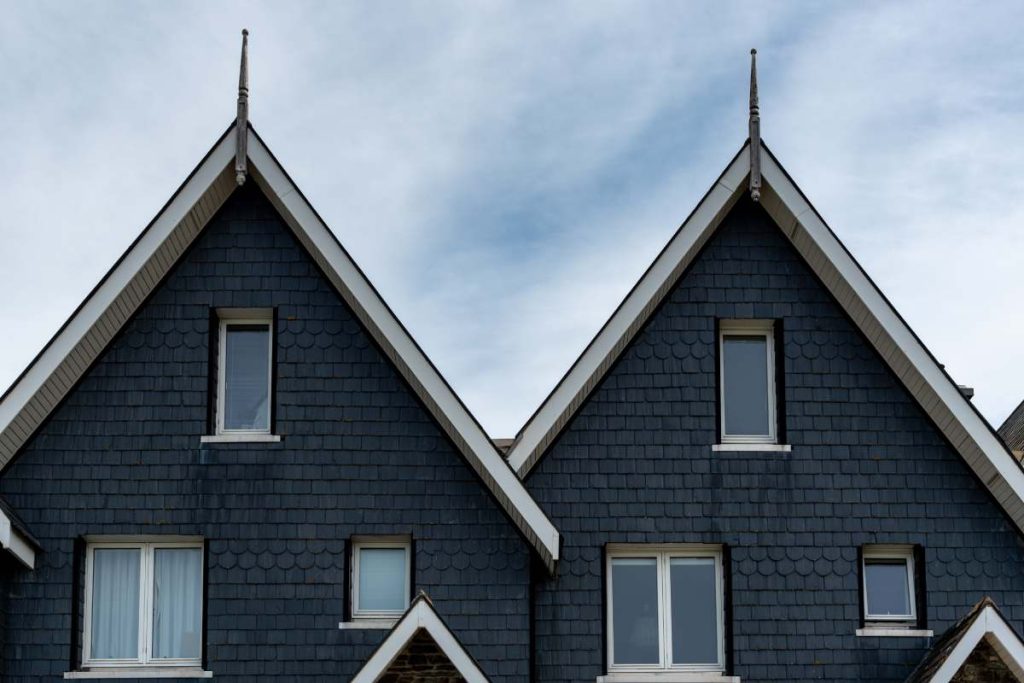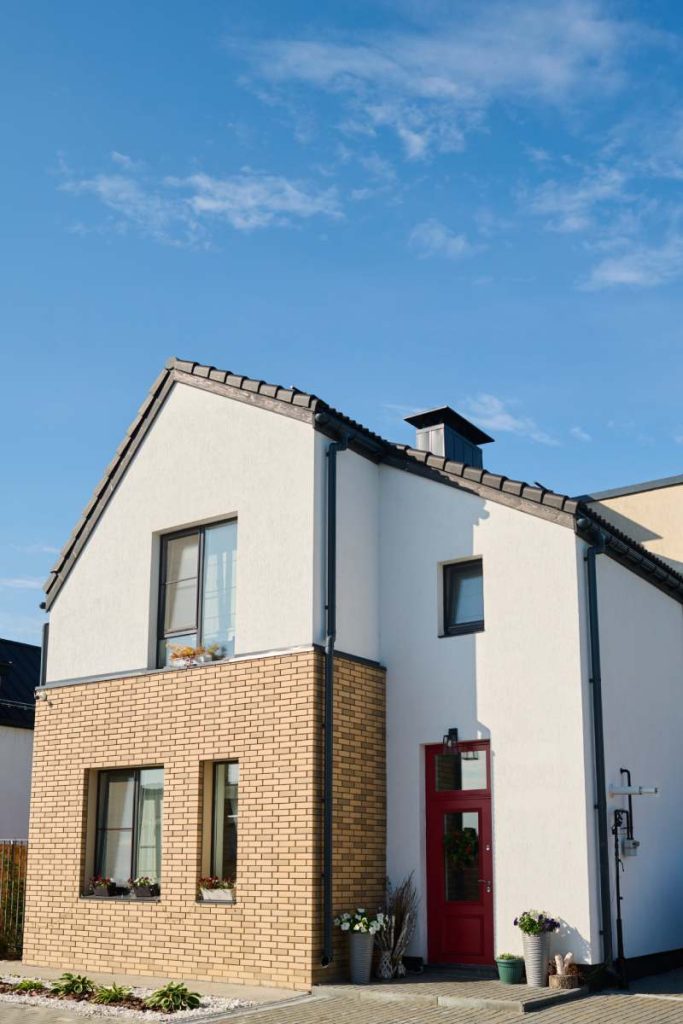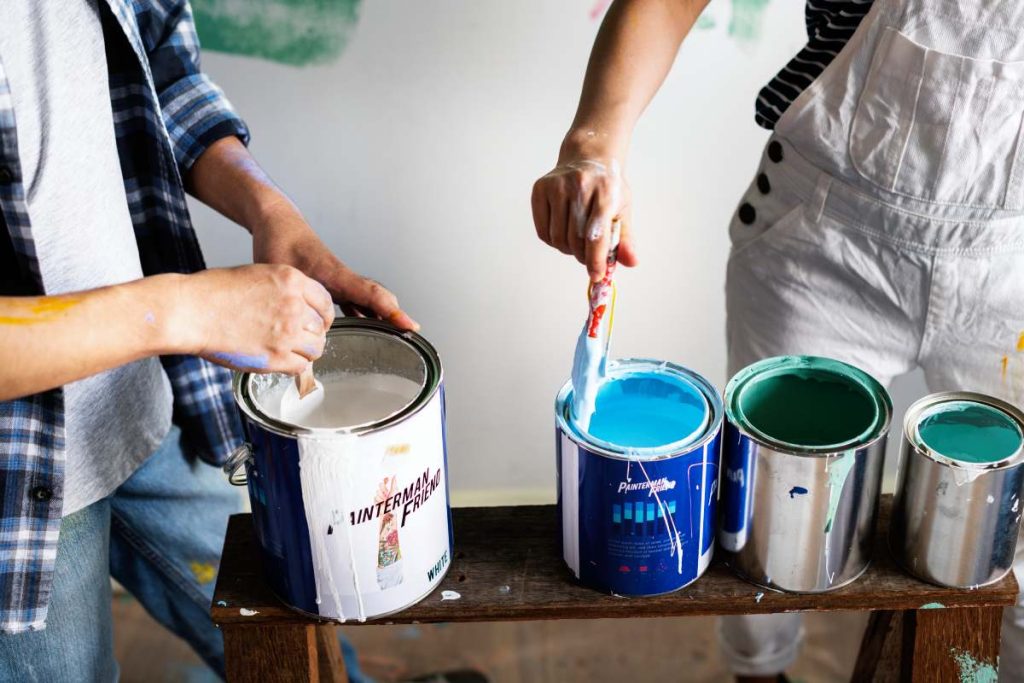Does paint colour affect temperature? What colour should I paint my home?

Picking the right colour for your home is about more than just looks. It can really make a difference to how much energy your home uses, how comfy it feels, and even how much you pay for utilities.
The colour you choose affects how much heat your home holds onto or reflects, which can make a big difference to indoor temperatures and energy bills. Of course, the climate is a big deal when making this choice, but your personal style, the look of your neighbourhood, and how the inside and outside of your home fit together also matter a lot.
This article will help you think about all the important stuff so you can pick a colour that makes your home look great and work great too.
Related article:
Does paint colour affect temperature?
Yes, paint colour can significantly affect temperature. The colour of a surface determines how much light and heat it absorbs or reflects. This concept is rooted in the science of light and heat transfer.
The Basics of Light and Heat
Light from the sun consists of various wavelengths, which we perceive as different colours. When sunlight hits a surface, some of it is absorbed and converted into heat, while the rest is reflected. The amount of light absorbed or reflected depends on the colour of the surface.
Dark vs. Light Colors
Dark Colors: Dark colours, such as black or navy blue, absorb most of the light that hits them. When a surface absorbs light, it converts that light into heat, causing the surface to warm up. This is why dark-coloured surfaces can become extremely hot when exposed to sunlight. For example, if you wear a black shirt on a sunny day, you might notice that it feels much warmer than a white shirt. The same principle applies to buildings, cars, and other objects.
Light Colors: Light colours, such as white or light grey, reflect most of the light that hits them. Because these colours reflect more light, they absorb less heat and remain cooler compared to dark colours. This reflective property is why white clothes are preferred in hot climates—they help keep the body cooler by reflecting sunlight.

Practical Applications
Understanding how paint colour affects temperature has practical applications in various fields, including building design, automotive engineering, and even clothing manufacturing.
Buildings: In architecture, the colour of a building’s exterior can influence its energy efficiency. Buildings with light-coloured roofs and walls reflect more sunlight, reducing the amount of heat absorbed. This can lower cooling costs in warm climates, as less energy is needed to maintain a comfortable indoor temperature. Conversely, in colder climates, darker colours may be used to absorb more heat, helping to reduce heating costs.
Vehicles: The colour of a car can also impact its internal temperature. A dark-coloured car will absorb more sunlight and heat up faster than a light-coloured car. This difference can be quite noticeable on hot days, affecting the comfort of the passengers and potentially increasing the need for air conditioning, which in turn affects fuel efficiency.
Clothing: When choosing clothes for hot weather, lighter colors are typically preferred because they help keep the body cooler. This is why summer clothing often comes in whites and pastels, while winter clothing features darker shades.
Scientific Studies
Several studies have confirmed the relationship between colour and temperature. For example, a study by the Lawrence Berkeley National Laboratory found that white roofs can stay up to 30°C cooler than black roofs under the same conditions. Another study observed that white cars reflect about 60% of sunlight, while black cars reflect only 5%, leading to significant differences in interior temperatures.
In summary, paint colour does affect temperature by influencing how much light and heat a surface absorbs or reflects. Dark colours absorb more light and heat, making surfaces warmer, while light colours reflect more light and heat, keeping surfaces cooler. This knowledge is applied in various industries to improve comfort, efficiency, and energy consumption.
What colour should I paint my home?
When deciding on the colour to paint your home, one crucial factor to consider is your local climate. The choice of paint colour can significantly impact your home’s energy efficiency, comfort, and even your utility bills. Let’s explore how different paint colours interact with varying climates and what this means for your home.
Hot and Tropical Climates

If you live in a hot or tropical climate, painting your house a dark colour could be a costly mistake. Dark colours, such as black, dark blue, or deep green, absorb more sunlight and convert it into heat. This means that a dark-coloured house will become significantly warmer as it absorbs more of the sun’s rays. The additional heat absorbed by the exterior can then transfer into your home, making it warmer inside and forcing your air conditioning system to work harder to keep the indoor temperature comfortable. This increased load on your air conditioning can lead to higher energy bills.
To combat this, lighter colours are recommended for homes in hot climates. Light colours, such as white, beige, light grey, or pastel shades, reflect more sunlight and absorb less heat. This reflection helps keep your home cooler naturally, reducing the reliance on air conditioning and helping to lower your energy costs. Moreover, a cooler house provides a more comfortable living environment, especially during the peak of summer.
Cold Climates
On the other hand, if you reside in a region with a cold climate, such as the far north, painting your house a dark colour might actually save you some energy. Dark colours absorb more heat, which can be beneficial during cold winters. A dark-coloured exterior can help your home absorb as much heat as possible from the sun, aiding in warming up your home’s interior. This can help reduce heating costs, as your heating system will not have to work as hard to maintain a comfortable indoor temperature.
However, it’s essential to consider the seasonal variations in your region. If your area experiences hot summers, the benefits of a dark-coloured home in winter might be offset by higher cooling costs in summer. This is particularly relevant in regions like the Midwest, where temperatures can swing dramatically between seasons.
Areas with Mild Climates
For those who live in regions with relatively mild and consistent temperatures year-round, the choice of paint colour might be less critical in terms of energy efficiency. In such areas, you have more flexibility and can choose a colour based on aesthetic preference without worrying too much about the impact on your heating or cooling costs. Nonetheless, even in mild climates, lighter colours can help in maintaining a more comfortable indoor temperature during the warmer months.
Weighing the Pros and Cons
If you’re inclined to paint your home a dark colour, it’s essential to weigh the pros and cons. Consider the following:
- Pros of Dark Colors:
- Absorbs more heat in winter, potentially lowering heating costs.
- Can provide a bold, striking appearance to your home.
- Cons of Dark Colors:
- Absorbs more heat in summer, raising cooling costs.
- Can make the home less comfortable during hot weather.
For those living in areas with extreme seasonal variations, choosing a paint colour becomes more complex. You might need to balance the benefits of a cooler home in the summer against the advantages of a warmer home in the winter.

How should I choose my home colour?
Choosing the colour of your home is a significant decision that impacts not only its appearance but also its energy efficiency and comfort. While climate is a crucial factor to consider, several other elements can help guide your choice to ensure you love your home’s look and feel.
Consider the Climate
As aforementioned, the climate where you live plays a heavy part in determining how much heat is absorbed by your home. As mentioned earlier:
- Hot Climates: In hot and tropical climates, opt for lighter colours like white, beige, or light grey. These colours reflect more sunlight, helping to keep your home cooler and reducing the need for air conditioning. This can lower your energy bills and provide a more comfortable living environment during the summer months.
- Cold Climates: In colder regions, darker colours such as dark grey, navy blue, or even black can be more beneficial. These colours absorb more heat, which can help to warm your home and reduce heating costs during the winter. However, if your area experiences hot summers, you might need to balance the benefits of a warmer home in winter against higher cooling costs in summer.
Personal Style and Preferences
Your home should reflect your personal style and preferences. If you have a strong dislike for lighter colours, it’s important to choose a colour that you’ll enjoy looking at every day. Here are some tips to align your choice with your personal style:
- Exterior Aesthetic: Think about the overall look you want for your home. Do you prefer a modern, sleek look or a more traditional, rustic appearance? The colour can significantly influence the style. Light colours can offer a fresh, clean look, while darker shades can add a touch of elegance or cosiness.
- Neighbourhood Context: Consider the colour schemes of neighbouring homes. While you want your home to stand out, it should also complement the surrounding houses to maintain a cohesive neighbourhood aesthetic. Some homeowners’ associations (HOAs) have guidelines on acceptable colours, so be sure to check these before making a decision.
- Architectural Style: The architectural style of your home can also guide your colour choice. For instance, a classic Victorian home might look stunning in rich, bold colours, while a contemporary home might be best suited to more muted, neutral tones.
Interior-Exterior Coordination
The exterior colour of your home should harmonize with the interior colour scheme. A well-coordinated colour palette creates a seamless transition from outside to inside, enhancing the overall aesthetic appeal. Here are some considerations:
- Complementary Colors: Choose exterior colours that complement the interior colour scheme. For example, if your interior features warm tones like beige, brown, or gold, an exterior colour in a similar palette can create a harmonious look. Conversely, if your interior is more modern with cool tones like grey or blue, a matching exterior colour can enhance the cohesive feel.
- Accents and Trim: Don’t forget about the trim and accents. These elements can add depth and character to your home’s exterior. For instance, a white or light-coloured trim can make a darker house colour pop, while a darker trim can add sophistication to a light-coloured house.
Practical Tips
Here are a few practical tips to help you finalize your decision:
- Test Samples: Before committing to a colour, test a few samples on different sides of your house. Observe how the colours look at different times of the day and in various lighting conditions.
- Consider Longevity: Think about how the colour will age over time. Dark colours can fade more quickly under intense sunlight, while light colours might show dirt and stains more easily.
- Professional Advice: If you’re unsure, consult a professional colour consultant like Painting All Sorts. They can provide expert advice based on your home’s style, location, and personal preferences.
In conclusion
Choosing the perfect colour for your home is all about striking the right balance between what’s practical and what you personally love. Consider the climate to pick colours that boost energy efficiency and comfort. Make sure the exterior colour vibes with your own style, fits in with the neighbourehood, and matches your interior for a cohesive look.
Don’t forget to test out those colour swatches, think about how they’ll hold up over time, and get some expert advice if you’re stuck. The best colour for your home? It’s the one that makes you happy and comfy in your own space. After all, your home should be a true expression of you, so go for a colour that delights you every time you come home.










